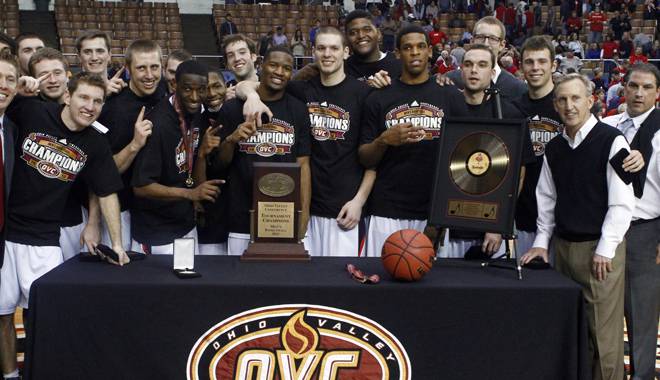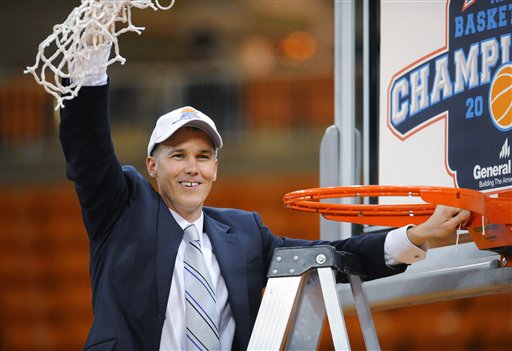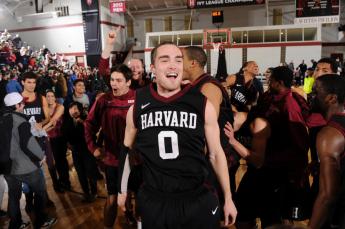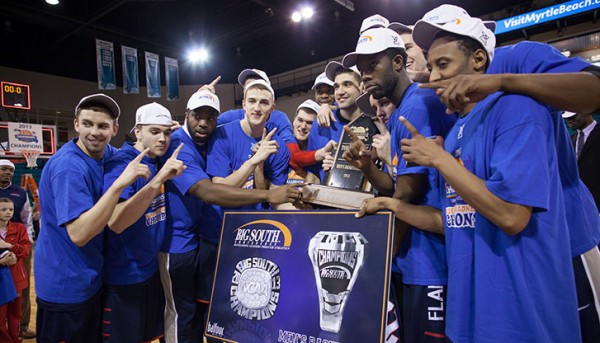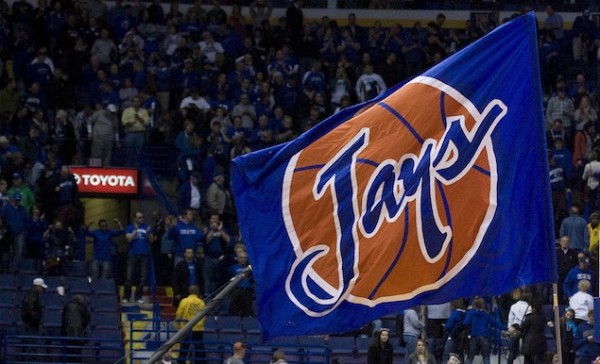Bracket Prep: Belmont, Florida Gulf Coast, Harvard, Liberty & Creighton
Posted by BHayes on March 11th, 2013The first five NCAA Tournament bids were earned over the weekend, so as each of the 31 automatic qualifiers plays their way into the Dance over the next week, we’ll take some time to give you an analytical snapshot of each team that you can refer back to when you’re picking your brackets next weekend.
Belmont
- OVC Champion (26-6, 16-2)
- RPI/Pomeroy/Sagarin = #18/#47/#50
- Adjusted Scoring Margin = +13.1
- Likely NCAA Seed: #10-#12
Three Bruce Pearls of Wisdom.
- In what is becoming a spring ritual as routine as Groundhog Day, the Belmont Bruins are back in the NCAA Tournament field. It’s the third straight year and sixth time in the last eight seasons that the Bruins have earned their league’s auto-bid to get there, with the fresh take on this go-around being the conference they represent – no longer Atlantic Sun members, Belmont will be repping the Ohio Valley. For all the March buzz the program seems to generate, they will still be seeking their first NCAA Tournament win come next week. Don’t be shocked if they are once again a trendy pick to swing a first-round upset, but is this the group that finally gets it done for Rick Byrd?
- Another year, another uber-efficient offensive outfit in Nashville. The senior backcourt of Ian Clark (18.1 PPG, 46% 3FG) and Kerron Johnson (13.7 PPG, 4.8 APG) will be among the most talented and experienced in the field of 68, but nearly every Bruin that steps on the floor produces at an efficient clip. Belmont is best in the country in two-piont FG%, but still gets nearly a third of their points from behind the arc. It all comes together for an effective field goal percentage of 56.8% – good for second best in the nation.
- Picking Belmont to win a game in past years has hardly been a foolish idea, but this year’s team should have the best shot yet to pick up that elusive first NCAA win. The seed should be the highest in program history, five upperclassmen fill out the starting lineup, and the Bruins had to emerge from an underrated OVC to get here. Their Achilles heel remains an undersized rotation that struggles to rebound on both ends, so it wouldn’t hurt to draw a less physical team unlikely to kill the Bruins on the glass. Drawing Wisconsin and Georgetown the last two years – tough, disciplined units, both – was a bit of bad luck, but there should be plenty of power conference foes on the #5-#7 lines that would not relish a first round match-up with Belmont.
Florida Gulf Coast
- Atlantic Sun Champion (24-10, 16-5)
- RPI/Pomeroy/Sagarin = #95/#126/#124
- Adjusted Scoring Margin = +3.7
- Likely NCAA Seed: #15-#16
Three Bruce Pearls of Wisdom.
- It was a season of firsts for second year coach Andy Enfield and the Eagles. In just their sixth season of D-I hoops, Florida Gulf Coast took the program’s first winning season one step further by winning the Atlantic Sun’s auto-bid. Their Tournament debut will reintroduce FGCU to the national stage after a four-month hiatus – back on November 13, they made headlines when they shocked Miami, who we now know as ACC regular season champions.
- Balance is the name of the game for Florida Gulf Coast. Nine Eagles average double-figure minutes and six score at least six points per game, with Sherwood Brown leading the way at 15.3 per contest. Enfield has his group playing fast (#55 nationally in adjusted tempo), and they thrive off turning opponents over. The team ranks 25th nationally in defensive steal percentage, and sophomore Bernard Thompson is an eye-popping sixth in the nation in the individual category. In addition to his 2.8 SPG, Thompson also averages 14.0 PPG — good for second on the team.
- The good news is that the Eagles shouldn’t be intimidated when they step on the floor against one of the best teams in the country – in addition to the win over the Hurricanes, FGCU took the floor with Duke, VCU, Iowa State, and St. John’s this season. The bad news is that most of those contests (Miami shocker aside) were not close. The computer numbers look good and the Miami win brings credibility, but the lack of a defined team strength and some struggles from three-point range (#212 nationally at 33.1%) do not give this club the look of a giant-killer. The best bet for FGCU is to get into a track meet with a team devoid of secondary ball-handlers, and hope to get hot from deep. It’s the definition of a longshot, but they call them #15 seeds for a reason.
Harvard
- Ivy Champion (19-9, 11-3)
- RPI/Pomeroy/Sagarin = #92/#107/#108
- Adjusted Scoring Margin = +4.0
- Likely NCAA Seed: #14
Three Bruce Pearls of Wisdom.
- The words “Harvard” and “pedigree” share space in the same sentence quite often – just not when the conversation is about the school’s basketball program. Sixty-six years between NCAA Tournament bids will do that to you, but Tommy Amaker has the Crimson back in the Dance for the second consecutive season. Winning at Harvard is hard enough, but doing it after losing your two best players (and also senior co-captains) for the season? Nothing short of miraculous, and also pretty solid evidence that Amaker is building something special in Cambridge.
- The losses of Kyle Casey and Brandyn Curry to academic suspension back in September had a profound impact in shaping this team. One consequence has been a shorter bench – and more minutes for a quartet of Crimson ironmen, all of whom average upwards of 33 minutes per game. Highlighting the foursome are a dynamic pair of underclassmen guards, as both Wesley Saunders (16.5 PPG, 3.7 APG, 53% 3FG) and Siyani Chambers (12.9 PPG, 5.7 APG, 44% 3FG) rank in the top ten nationally in percentage of minutes played – a pretty fair testament to the immense trust Amaker has already placed in his young play-makers.
- Harvard is not a big team (#315 in effective height), and has struggled on the glass accordingly. Turnovers have also been an issue (21.1% of all possessions), but they are the lone blemish on an otherwise sterling offensive statistical profile. This year’s team is not nearly as solid defensively as the Crimson of a year ago, but the offensive competence should again make this a dangerous first round opponent. A win over Cal (in Berkeley) and competitive showings at Memphis, UConn, St. Mary’s and UMass (largest margin of defeat was just 10 points) highlighted a challenging non-conference slate, so don’t expect Amaker’s team to be in awe of their opening round opponent — he has his team believing they belong. Whether that can be parlayed into the program’s first NCAA Tournament victory is another story entirely, but a good start to that pursuit would be finding a first round match-up with a team lacking a bruising frontcourt.
Liberty
- Big South Champion (15-20, 10-10)
- RPI/Pomeroy/Sagarin = #292/#247/#265
- Adjusted Scoring Margin = -5.1
- Likely NCAA Seed: #16 (First Four)
Three Bruce Pearls of Wisdom.
- Um, hey Liberty – what are you guys doing here? Weren’t you just 11-20 a week ago? Don’t you have an RPI bordering on #300? Yes and yes, but here we find the Flames — your Big South Tournament Champions. Quite simply, this has to be the worst team — on paper, mind you — to ever grace the hallowed grounds of the NCAA Tournament. The only other 20-loss team to ever make the field (don’t tell me you forgot that 2008 Coppin State team!) finished that season with an RPI of #219 – some 73 spots better than the Flames’ current index. Make no mistake about it – Liberty’s inclusion in this field is a Cinderella story unto itself.
- The one thing the Flames do well is shoot the ball. They shoot 36.7% from behind the arc and 73.3% from the charity stripe – efforts spearheaded by their trio of double-figure scorers. John Caleb Sanders (34% 3FG, 77% FT) leads the team at 13.8 PPG, but a balanced offense sees fellow upperclassmen Davon Marshall (42% 3FG, 85% FT) and Tavares Speaks (38% 3FG, 81% FT) also average more than 13 PPG. The trio combined for 65 points in yesterday’s Big South Final. Needless to say, Liberty will go as far as these three guards can carry them.
- Defense is not a strong suit for Liberty, to put it mildly. The lowlight of the ineptitude came on February 19, when the Flames gave up 102 points to Longwood in regulation – the same Longwood that ranks 298th nationally in offensive efficiency. Hmmmm. The porous D is but the tip of the iceberg for head coach Dale Layer, who will have his hands full extending this unexpected March surge. Liberty will most certainly be headed to the First Four, where they will also likely be a heavy underdog. Nobody wants to admit to being happy just to be there, but if anyone should be, it’s Liberty. A win in Dayton would be pure gravy.
Creighton
- MVC Champion (27-7, 16-5)
- RPI/Pomeroy/Sagarin = #34/#15/#18
- Adjusted Scoring Margin = +13.6
- Likely NCAA Seed: #5-#7
Three Bruce Pearls of Wisdom.
- You may have heard of Doug McDermott by now. Two thousand points in three seasons will make it hard to hide from the national spotlight, especially when your team is busy winning 27 games and sweeping the Missouri Valley regular season and tournament titles. But as well-publicized as the Creighton junior’s brilliance has been, the numbers still demand attention – third in the country in scoring (23.4 points per game) with shooting splits of 59/51/86 (2FG%, 3FG%, FT%). The mid-season Creighton swoon will likely cost McDermott some NPOY hardware, but Creighton enters the NCAA Tournament with a leading man who has been as good as it gets this season.
- McDermott occupies a lot of the attention (both from other teams and the media), but the Jays are no one-man band. Gregory Echenique (9.6 PPG, 6.5 RPG, 1.6 BPG) is a physical big, capable of matching up with anyone on the interior. Grant Gibbs (8.5 PPG, 4.1 RPG, 5.9 APG) has the mind of a point guard but the body of a 6’5” wing – there are few purer passers in college basketball than the Gonzaga transfer. And don’t forget Ethan Wragge, a stretch four that knocks down threes and knocks down threes only – he has attempted 161 three-pointers this season, compared to just 11 two-point field goal attempts. The junior is the definition of a one-dimensional player, but it’s a dimension good enough to net Wragge the 10th best offensive rating in the country (per KenPom).
- The Bluejays’ offense has been nothing short of sizzling all year, but it will be the defensive effort that ultimately determines the length of their NCAA Tournament stay. Defensive efficiency has improved since last season, when McDermott and Creighton were able to navigate their way to the third round. This go-around, anything is on the table for the Jays – everything from a second round flameout to a Final Four run feels possible. The draw certainly matters for a team with some athletic limitations, but show me Doug McDermott and a supporting cast laced with shooters, and I’ll show you a chance to advance – against nearly anyone.





























